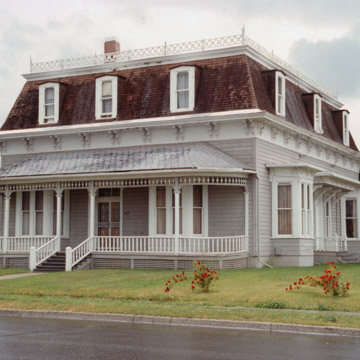With gold mining in the region in full swing in the 1880s, and with the 1884 arrival of the Oregon Short Line Railroad, which provided connections to Portland and Salt Lake City, Baker City prospered and its population jumped from 1,258 inhabitants in 1880 to roughly 6,700 people in 1900. With this growth came businesses that supported the local mining industry, along with lumber mills, an iron foundry, a hotel, and an assortment of mercantile stores, including a department store owned by German-Jewish pioneer Sigismund Heilner. Toward the end of the nineteenth century, Heilner and many other successful businessmen built fashionable houses at the edges of the central business district.
In 1880, Heilner and his wife, Clara Neuberger Heilner, built a Second Empire house on the southwest corner of Court Avenue and Second Street, two blocks west of their Main Street store. The house represents high-style residential design in what was, at the time, essentially a frontier mining community. Unlike contemporaneous designs in larger cities like Portland or San Francisco, here the house is relatively low, with just one story under its second-story mansard roof; typically houses of this type were much taller, with their vertical orientation emphasized by tall, narrow windows. Here, three dormers project from the mansard roof on each elevation, and projecting window bays flank the entrances on the east and north elevations. The main (east) entry consists of paired double doors beneath a veranda that extends the length of the facade; a secondary entrance on the north elevation is sheltered by a projecting porch roof. Paired decorative brackets grace the eaves of the main roof, the bay windows, and the side porch.
Descendants of the Heilners continuously occupied the house until 1988, after the death of Clara’s nephew, Herman David. The house was bequeathed to the Oregon Historical Society, but has since been purchased for use as a private residence and financial services office.








